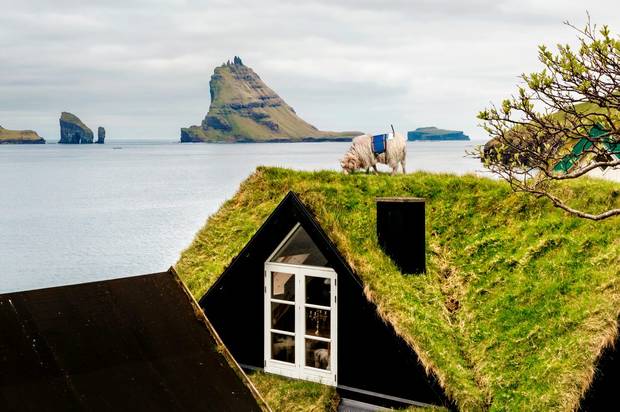The future that science fiction creators have been predicting for years is finally here: a virtual world that exists parallel to reality. No longer the stuff of stories, the Metaverse is real and shaping the world as we know it.
With experts predicting a large percentage of people in the Metaverse by 2030, it’s no surprise that this virtual trend is making its way into tourism. The word “meta” is taking over headlines in travel publications and news sources around the world — it seems like everyone is talking about it. And they should be.
While this new world heralds the end of travel as we know it, that doesn’t mean that in-person travel is going away. Virtual experiences, though they can be made to appear hyper-realistic, are not the “real deal.” In fact, data is showing that more and more people are craving authentic travel and deep experiences, and these can’t be recreated through virtual reality. So, don’t worry, you won’t have to construct a virtual version of your region to attract tourists in the future… unless you want to.
The travel industry is beginning to embrace this new chapter in technology. Hotel franchises and even the tourism offices of whole countries are starting to implement the virtual experience into their marketing tactics little by little. But, rural destinations don’t need to leave the Metaverse to the big wigs. There are tactics that allow rural DMOs and CVBs to give visitors an elevated experience and stay relevant in an ever-evolving industry.

What, Exactly, Is the Metaverse?
The Metaverse, according to experts, is actually not fully realized yet, making the definition of this trend even more, well, meta. Essentially, it is a mix of augmented and virtual reality that creates a world parallel to our own. This article from Vice helps explain this idea a bit further:
“Many experts look at the Metaverse as a 3D model of the internet. Basically, a place parallel to the physical world, where you spend your digital life. A place where you and other people have an avatar, and you interact with them through their avatars… it is, in the simplest terms, a shared virtual space that is interactive, immersive and hyper-realistic.”
As cool as this sounds, this world won’t be real in the fullest sense until there is a single location for people, or their avatars, to go. A great example of what this could look like is the 2018 film called “Ready Player One” where people find salvation from the monotony of everyday life in a virtual universe called OASIS. Using VR headsets, people enter the OASIS through their virtual avatars and engage in a whole world that is a digital reflection of their own. The film is set in 2045, and with today’s progression of technology, it’s likely our world could reach this level of the Metaverse even before then.

This New Technology Is Already at Work in Tourism
While this virtual universe hasn’t evolved into its final form, there are ways tourism is utilizing elements of this technology to get their foot in the digital door. One common usage is the Metaverse as a “try before you buy” method. Imagine being able to walk around a hotel room before you book it or to virtually explore a festival before you attend? Through the virtual world, it’s possible for visitors to take a look at their destination before they arrive.
On the other hand, it also helps visitors with wayfinding. One of the biggest fears of traveling to new areas is getting lost. But, if visitors could explore locations virtually before a trip, they would feel a lot more comfortable booking that destination since they’re already familiar with it.
One creative campaign from the Faroe Islands, a remote archipelago between Norway and Iceland known for its breed of sheep, strapped Faroese sheep with solar-powered cameras and began uploading images of their beautiful region to Google’s Street View. The campaign, which the island’s tourism board called SheepView 360, is also on their destination website and allows visitors to virtually explore the island from the back of a sheep. Not only did this help visitors with wayfinding, but also attracted loads of free publicity.
To keep up with the Metaverse, rural DMOs will need to come up with new and creative ways to insert these tactics into their marketing strategies. Creating virtual opportunities for visitors will keep destinations relevant and attract a wider audience.
How You Can Implement Meta Tactics in Your Rural Area
If you’re beginning to feel overwhelmed, don’t be. Rural destinations don’t have to leave Metaverse marketing to statewide or urban DMOs and CVBs — there are opportunities for them to hop on the trend, too. While there are numerous creative ways to get into the Metaverse, here are a few ideas based on our research:
- Create digital merchandising and advertising. People love to express themselves, especially with digital avatars. As these become more popular, and more common, designing and creating digital swag or branded location filters can be a great way to get users to engage with your brand and spread awareness.
- Incorporate NFTs into your giveaways and contests. Also known as a “non-fungible token,” this is a digital piece of property that is owned by a single organization or person. Giving away NFTs through contests allows visitors to prove their ownership of the token in exchange for incentives, such as a special tour, a discounted visit at a local attraction or free destination merch.
- Develop immersive digital experiences at your destination. For destinations with historical amenities or significance, offering “talks” with a digitally-recreated historical figure or the opportunity to explore what a region or building would have looked like in the past.
- Offer incentives for stakeholders to offer “try before you buy” experiences. Hotels, inns, museums and local festivals are all great candidates for this technology. Offering digital walk-through tours and 360 festival views make it more likely that visitors will book your destination.
The rise of digital marketing also means that there are funding opportunities that can be applied to Metaverse initiatives. For digital design and art, consider petitioning your state or regional council of the arts or even endowments for arts and humanities. For other projects, you can also partner with large stakeholders in your region, or allocate some general funding towards these efforts.
Every region has something in common: the need for funding. So how do you make your destination stand out to institutions? Watch this on-demand webinar to find out.
The dawn of the Metaverse means that there will be countless opportunities to capitalize on this new trend. This is just the beginning of a whole new world of marketing and rural destinations can easily pave the path forward.

The DMO Download
A weekly digest for those who market & manage destinations.
Most Importantly, Track the Trends
Just like tourism, the Metaverse is constantly changing and evolving, so it’s vital to stay on top of the latest news. As new products are introduced and new possibilities are explored, your destination won’t be able to keep up at all if you aren’t informing yourself. Becoming an early adopter is key in testing out new marketing opportunities in the virtual world. Making your mark now will make it easier to develop a strong, steady presence as the Metaverse grows.
Track the news, keep brainstorming and reap the rewards.
Bull Moose
The star behind Bull Moose Marketing. Experienced traveler, whiskey connoisseur and selective herbivore. ? Stay tuned for my new podcast, "The Scenic Route", on cultural tourism and economic development. ?
Help Articles
The Progressive Marketer
Marketing articles for manufacturing, construction, B2B services, tourism, and other industry segments working to make their communities better places to work and live.
Your Visitors Just Want to Feel Understood
When it comes to travel, your visitors want to feel understood. Destinations that can show empathy and understanding will gain their trust and loyalty.
How to Build an Authentic Brand Promise with Your Destination’s Website
It’s important to make sure the first impression, and every touch-point in between, is one that’s authentic for your DMO, CVB or cultural nonprofit. Your visitors want to know that your area is worth the visit, and that they can trust that you’re marketing an experience that will match up to expectations.
Enhancing the Visitor Experience With Digital Analytics
Looking at the right analytics helps DMOs and CVBs convert users into visitors and your destination’s website plays a key role in this process.
